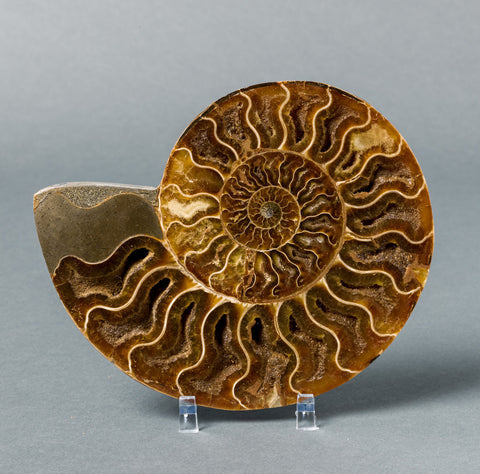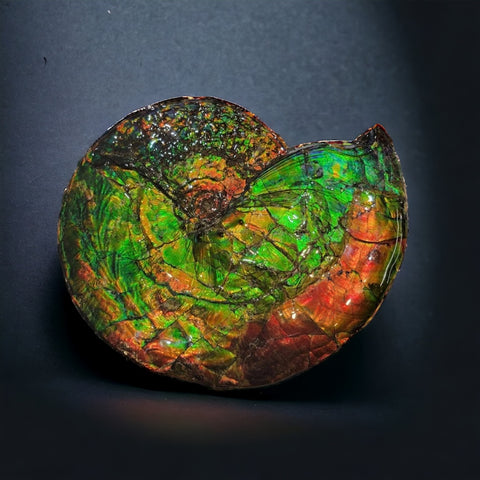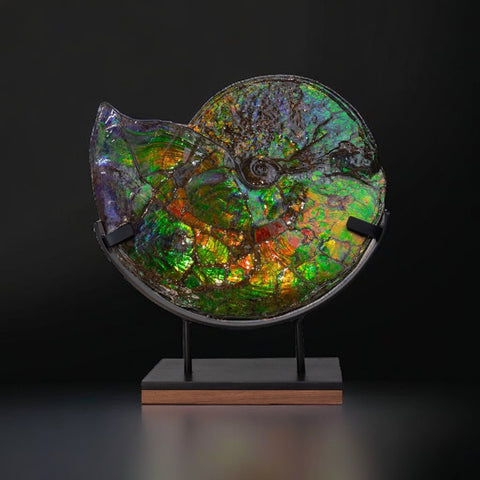Gorgeous Sliced Ammonite from Madagascar
This piece has been sold, but we may have a similar item available. Contact us online to make an inquiry.
This decorative ammonite fossil (Cleoniceras cleon) has been cut and polished to reveal the spectacular mineralization of the flotation chambers. It dates back to the Lower Cretaceous (145 to 100 million years old) and was collected near Toliara (Tulear) in Southwestern Madagascar. A gorgeous piece of natural history!
This is one of our top selling fossils and makes a great gift for fossil, mineral, and science enthusiasts or someone simply looking for a beautiful display piece.
Ammonites have intrigued and fascinated humans for thousands of years. Many cultures - from Australian aboriginals to the ancient Egyptians - collected and treasured these prehistoric and beautiful fossils. Perhaps it has something to do with the Fibonacci spiral pattern of their shell, which mirrors the galaxies.
Ammonites belong to the mollusca phylum in a class known as cephalopods – “head-footed” creatures such as octopus and squid. They swam in ancient oceans from the Devonian Period, about 400 million years ago, to their extinction along with the dinosaurs in the Cretaceous Period, 65 million years ago.
Ammonites were free floating invertebrates that were attacked by plesiosaurs and mosasaurs, two groups of gigantic marine reptiles. One way that ammonites could avoid an attack was to quickly change their buoyancy levels, zig zagging and sinking rapidly.
These incredible prehistoric animals ranged in size from tiny species only a few centimetres in diameter to the monstrous Cretaceous ammonite, Parapuzosia seppenradensis, which grew to about 3 meters and would probably of weigh close to 1500 kilograms.







